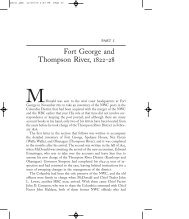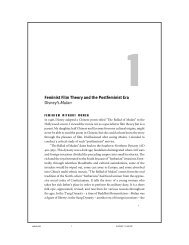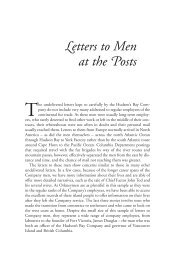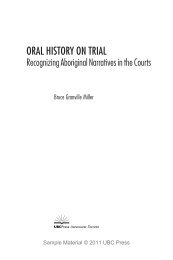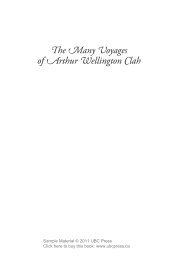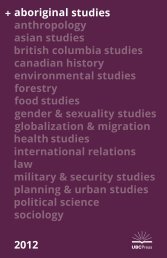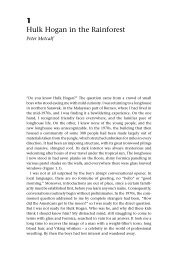Fort Chipewyan and the Shaping of Canadian History ... - UBC Press
Fort Chipewyan and the Shaping of Canadian History ... - UBC Press
Fort Chipewyan and the Shaping of Canadian History ... - UBC Press
You also want an ePaper? Increase the reach of your titles
YUMPU automatically turns print PDFs into web optimized ePapers that Google loves.
1<br />
Writing <strong>Fort</strong> <strong>Chipewyan</strong> <strong>History</strong><br />
The truth about stories is that that’s all we are.<br />
– Thomas King, The Truth about Stories<br />
In 1899, government commissioners travelling through nor<strong>the</strong>rn Alberta<br />
to negotiate Treaty No. 8 <strong>and</strong> issue Métis scrip were perplexed<br />
by how un-Indian <strong>the</strong> Aboriginal people appeared. 1 While <strong>the</strong> physical<br />
setting at Lesser Slave Lake Settlement was “all sweet <strong>and</strong> primeval, <strong>and</strong><br />
almost untouched by civilized man” (Mair 1908:54), <strong>the</strong> cultural setting<br />
was not: “The crowd <strong>of</strong> Indians ranged before <strong>the</strong> marquee had lost all<br />
semblance <strong>of</strong> wildness <strong>of</strong> <strong>the</strong> true type ... Instead <strong>of</strong> paint <strong>and</strong> fea<strong>the</strong>rs, <strong>the</strong><br />
scalp-lock, <strong>the</strong> breech-clout, <strong>and</strong> <strong>the</strong> buffalo-robe, <strong>the</strong>re presented itself<br />
a body <strong>of</strong> respectable-looking men, as well dressed <strong>and</strong> evidently quite as<br />
independent in <strong>the</strong>ir feelings as any like number <strong>of</strong> average pioneers in<br />
<strong>the</strong> East ... One felt disappointed, almost defrauded. It was not what was<br />
expected, what we believed we had a right to expect” (54-55). The commissioners<br />
could not even distinguish Indians from Métis, or Half-breeds,<br />
as <strong>the</strong>y were commonly called. Charles Mair (1908:72) referred to <strong>the</strong><br />
“primitive people” <strong>of</strong> <strong>the</strong> region as “Lakers,” 2 <strong>and</strong> <strong>the</strong> following year Dr.<br />
O.C. Edwards noted in his journal: “It seems absurd to classify <strong>the</strong> dark<br />
skinned people <strong>of</strong> <strong>the</strong> north under <strong>the</strong> separate heads <strong>of</strong> Indians <strong>and</strong> half<br />
breeds. I have not seen an Indian as he is popularly known or depicted<br />
since I left Calgary. These so-called Indians <strong>of</strong> <strong>the</strong> north are all half breeds<br />
Sample Material © 2011 <strong>UBC</strong> <strong>Press</strong><br />
1



